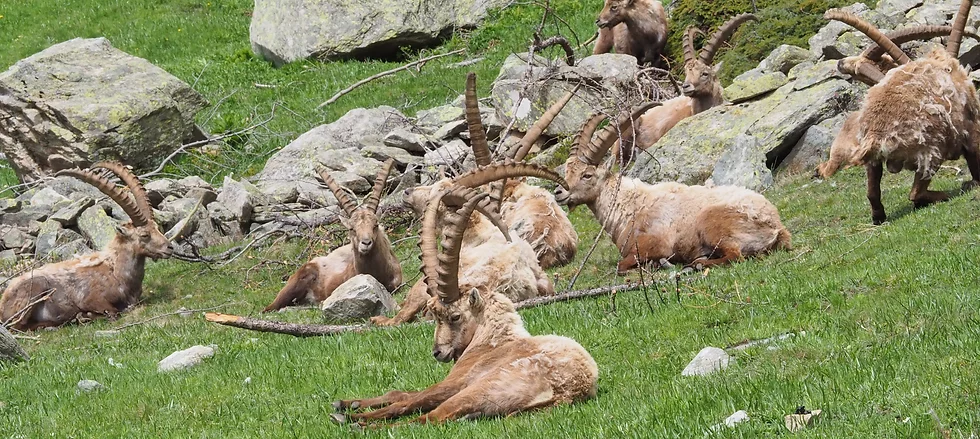
The Royal Hunting Reserve
In 1856, King Vittorio Emanuele II declared the Royal Hunting Reserve in the mountains of the Gran Paradiso, the only “4000” entirely located in Italian territory, saving the Alpine ibex (Capra ibex) from extinction. This species had disappeared from the entire Alpine arc, except for a few hundred specimens distributed around the Gran Paradiso massif. From this moment on, only the king and the royal family could hunt it.
Between 1860 and 1900, 325 kilometers of mule tracks were built or adapted, connecting five “Royal Hunting Lodges” located at altitudes of 2000-2200 meters. The “lodges” were situated in Orvieille and Piani del Nivolet (now the Savoia refuge) in Valsavarenche, Gran Piano di Noasca in Valle Orco, Dondena in Val di Champorcher, and Lauson in Valnontey (now the Dondena and Vittorio Sella refuges, respectively).
The King’s mule track
These mule tracks, suitable for riding, were organized with a main backbone of 150 kilometers, connecting the royal lodges, overcoming mountain passes and steep slopes. There were also various branches for 175 kilometers, leading to the huts of the gamekeepers and hunting positions. The most remote of these were often located at the limit of the surface once occupied by glaciers!
In 1913, the last royal hunt took place; six years later, Vittorio Emanuele III decided to cede the territories of the Gran Paradiso to the Italian state, with the condition of creating a National Park for the protection of alpine flora and fauna.
How the oldest park in Italy was born
On December 3, 1922, the Gran Paradiso National Park was established, the first Italian National Park, and the gamekeepers became today’s surveillance corps, namely the park rangers. It is precisely because of this historical legacy that the figure of the park ranger remains a peculiarity of the Gran Paradiso National Park to this day. In all other national parks, surveillance is entrusted to the military corps of the Forestry Rangers (formerly the State Forestry Corps), just as in the major US national parks it is entrusted to the “Foresters,” the so-called “rangers.”
From the protected area, the ibex gradually began to repopulate the Alpine arc, both spontaneously and with the reintroduction of individuals captured there. In recent years, the park has seen an increase in faunal presence with the return of the wolf and the first nesting of the bearded vulture in the Western Alps.
Since the post-World War II period, the presence of the park and a mix of geographical, naturalistic, historical, and cultural factors have ensured that the Alpine valleys affected by the protected area remained outside the dynamics related to the development of mass tourism, preserving their authenticity. These factors have had a particularly strong impact on the Orco and Soana valleys, located on the Piedmont side of the park: two valleys whose fate seems to be witnessing the return of nature and the extinction of man.
Taking a journey into the territory of the Gran Paradiso National Park means experiencing the emotion of a full immersion in an area characterized by extensive “wilderness“: vast unspoiled spaces, glaciers, rushing torrents, close encounters with wildlife, mountains that have made the history of mountaineering (even if not on the cover), legendary walls that have baptized modern climbing, tranquility, silence, contemplation, genuine but sincere hospitality, never adulatory.

